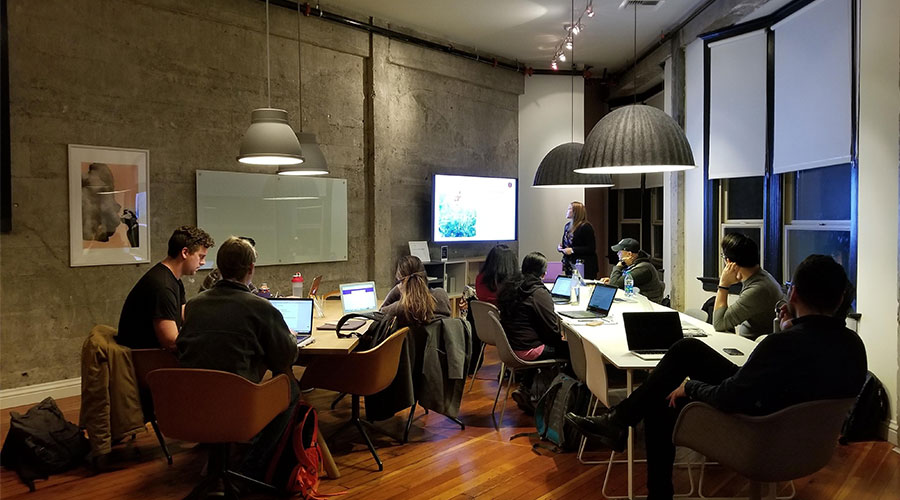For the 3rd Time, Level 3 Audiovisual Appears on the Inc. 5000, Ranking No. 2125 With Three-Year Revenue Growth of 189 Percent
NEW YORK, August 14, 2019 – Inc. magazine today revealed that Level 3 Audiovisual is No. 2125 on its annual Inc. 5000 list, the most prestigious ranking of the nation’s fastest-growing private companies. The list represents a unique look at the most successful companies within the American economy’s most dynamic segment—its independent small businesses. Microsoft, Dell, Domino’s Pizza, Pandora, Timberland, LinkedIn, Yelp, Zillow, and many other well-known names gained their first national exposure as honorees on the Inc. 5000. Brad Peterson, CEO of Level 3 Audiovisual states, “We are honored to once again to be included amongst the nations Inc. 5000 companies. I feel our growth and success are due to our incredible employees and the quality management system we’ve enacted for integrating AV technology into our clientele’s businesses”.
on Wednesday, 14 August 2019.
Posted in Award Winning
You’ve probably had a good chuckle at a broadcast TV blooper reel or on-air faux pas because there’s something funny about someone tripping over their tongue on live TV. But having the wrong technology in your broadcast TV studio or multimedia communications center is no laughing matter. To stay competitive in today’s television broadcast market, you have to offer more than two anchors sitting behind a desk or a lone reporter broadcasting from the red carpet. Modern video walls that display maps, statistics, photos, and videos can help capture viewers’ attention while providing anchors, hosts, and reporters with some variety in the way they present information. But the wrong video wall can distract viewers and cause them to reach for the remote. So how do you choose the right video wall solution for your broadcast and multimedia communications needs? Here are six important considerations to get you started.
on Monday, 12 August 2019.
Posted in Video Wall, Video Wall Display
Simulation labs are a growing part of healthcare training and education programs, but simulation lab managers still face some challenges when it comes to hiring the right staff, raising the necessary funding, and purchasing the right equipment, among other things. In the final recap of Level 3 Audiovisual's recent webinar, “15 Challenges in Healthcare Simulation and How to Conquer Them,” The Director of Healthcare Simulation at Level 3 Audiovisual, offers some insight for simulation lab managers to resolve their most common obstacles and frustrations. If you missed the first two recaps that focus on challenges faced by sim techs themselves, you can find them here and here.
on Wednesday, 17 July 2019.
Posted in Healthcare Simulation, Medical Simulation
Cast your mind back to middle school science (if you can!) and you’ll probably remember learning about ecosystems—a group of interconnected organisms or elements all cooperating in the same environment, like a rain forest or a coral reef. But ecosystems aren’t only found in the natural world. Interacting technologies—such as an integrated AV solution—can also form intricate systems that rely on additional interconnectivity. More broadly speaking, the systems can also connect with AV manufacturers, integrators, and end users, and missing any one of the elements threatens the health of your system. Keep reading for examples of outstanding AV systems integrated by Level 3 Audiovisual.
on Monday, 15 July 2019.
Posted in Audio-Video Installation, Audio-Visual Systems
Most people are familiar with the motto “reduce, reuse, and recycle,” but some things are easier to re-purpose than others. While anyone with a pair of scissors can turn an old pair of jeans into a hip pair of cut-offs, for example, re-purposing an older building for a new use is more complicated. Known as adaptive reuse, this can require a careful balance of preserving historical elements while introducing modern technology and improving accessibility. Working on AV projects in older, historic buildings often requires creative problem-solving, and that makes choosing an integrator familiar with preservation guidelines a very important step in the adaptive reuse process. Here are three things to discuss with your integrator before you tackle an AV project in a historic building.
on Wednesday, 10 July 2019.
Posted in Audio-Video Installation, Audiovisual Equipment
No two healthcare simulation labs are exactly the same, but many sim techs face similar challenges. In the recent webinar, “15 Challenges in Healthcare Simulation and How to Conquer Them,” the simulation experts at Level 3 Audiovisual discussed the most common challenges and offered solutions to address them. You can catch up on the first five challenges here. For a recap of the next set of challenges presented in the webinar, keep reading.
on Monday, 08 July 2019.
Posted in Healthcare Simulation, Simulation Training
InfoComm 2019, Orlando, June 13, 2019 – Level 3 Audiovisual has been honored with a Samsung Smart Signage Award for Installation of the Year 2018: Collaborative Space at InfoComm 2019 in Orlando, an annual event for the professional audiovisual and information communication industries.
on Friday, 21 June 2019.
Posted in Award Winning
Remember when your parents used to yell at you to stop wasting energy and turn the lights off, for crying out loud? Well, they might have been on to something. In commercial buildings, lighting alone accounts for 38 percent of total electricity usage—more than any other building system. That means lighting accounts for a large percentage of your monthly budget, too. And lighting doesn’t just affect budget numbers. Bad lighting can negatively impact employee productivity, while good lighting can make employees happier and more productive. With the right lighting control system, you can create an office environment that improves efficiency for both your building and your employees.
on Friday, 07 June 2019.
Posted in Smart Meeting Room Control
 Level 3 Audiovisual Ranks #2125 on Inc. 5000 Fastest Growing Private Companies in America
Level 3 Audiovisual Ranks #2125 on Inc. 5000 Fastest Growing Private Companies in America 







